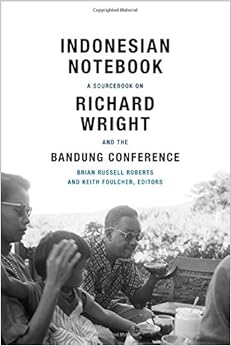Provocateurs: The Symbiotic Relationship Between Photographers and Writers exhibit:
Looking into Your Future, Past, Present
 |
Tayllor Johnson: Creative and Administrative Assistant to
Kevin Powell and BK Nation
|
Walking onto Medgar Evers College campus as a recent college grad was enough nostalgia for one night, but I kept going toward the library where the security pointed without stopping to remember my own college days. I walked past the familiar chatter of finals, friends, term papers, research fatigue, electric excitement, thesis preparation, and that finite moment. College. It had almost been a year and in some way I felt miles beyond my diploma and at the same time just on the other side of it. I walked downstairs to the opening ceremony of the National Black Writers Conference and the Provocateurs: The Symbiotic Relationship Between Photographers and Writers exhibit.

As a writer and poet, I felt at home with the title alone. Ever since poetry found me, it was never a secret the narratives that were whispered from museum walls, art galleries, and photo exhibitions. So to explore this idea in one space was overwhelmingly inspirational. The Brooklyn-based photographers along with the words of authors created a portrait of black art that reached what, now I know, is my limited perspective on the art contributed from the African diaspora. The writers along with the photographers captured a myriad of voices and moments, both public and surprisingly personal. Ruddy Roye’s photo, Legacy, of a young black man with his hands up in the middle of an expansive cotton field speaks volumes to where we are, where we come from, and where we are today. Yet, one of my favorite photos was from Thomas Sayers Ellis’ collection of a woman beaming with a full smile on a chair with her legs crossed, a can of Steel Reserve, and a cigarette in one hand. I remember another young person gazing at the pictures and saying, “We all have an Aunt Wendy.” She was so right. We all had the aunt who never minded how her dress fell because being a lady meant so much more than that; whose weapon was laughter and whose smile was constant despite the pain. Walking into that exhibit was like walking into a room of a thousand voices: the photographers, the poets, the writers, the individuals in the photos, the faculty, and finally the inner voice of the artist who gets to hear and witness it all.

I truly felt like a “young” artist in a classroom when the ceremony was closing. While walking amongst the faculty and reading the bios in the program for the conference and exhibit, I couldn’t help but feel, like I’m sure how all young artist feel, "how can I get here? How did these artists get here? How do I join this conversation as an artist of color?" The answer, I believed, was in the panels and discussions in the conference. A cloud of pride hovered over the exhibit as I went up the stairs to exit, for the narratives that were being featured on the wall were not just anybody’s, they were our stories, our people, testament to the limitlessness of time, space, geography, and the beauty of our people and our artist of color. The pieces paid homage to the history, evolution, and diversity in art created by the black diaspora in writing and photography, as a conversation. A conversation that was going to continue at the National Black Writers Conference, and I was looking forward to adding to the history.
[By Tayllor Johnson]
Since discovering her passion for spoken word at 15 years old, Tayllor hasn't stopped writing, performing, or teaching. Working with Get Lit, a non-profit literacy advocacy group, and representing Los Angeles in Brave New Voices 2010 taught her the healing and empowering force that was inevitable through spoken word. She hopes to grow and reach new heights in her performance and writing, always keeping in mind her mission to find new ways spoken word can empower the voiceless, soothe the wounded, and disturb the status quo to set all of us on a path to freedom.
















